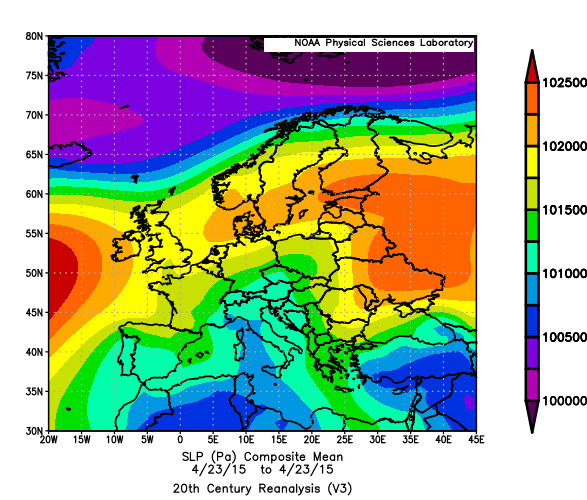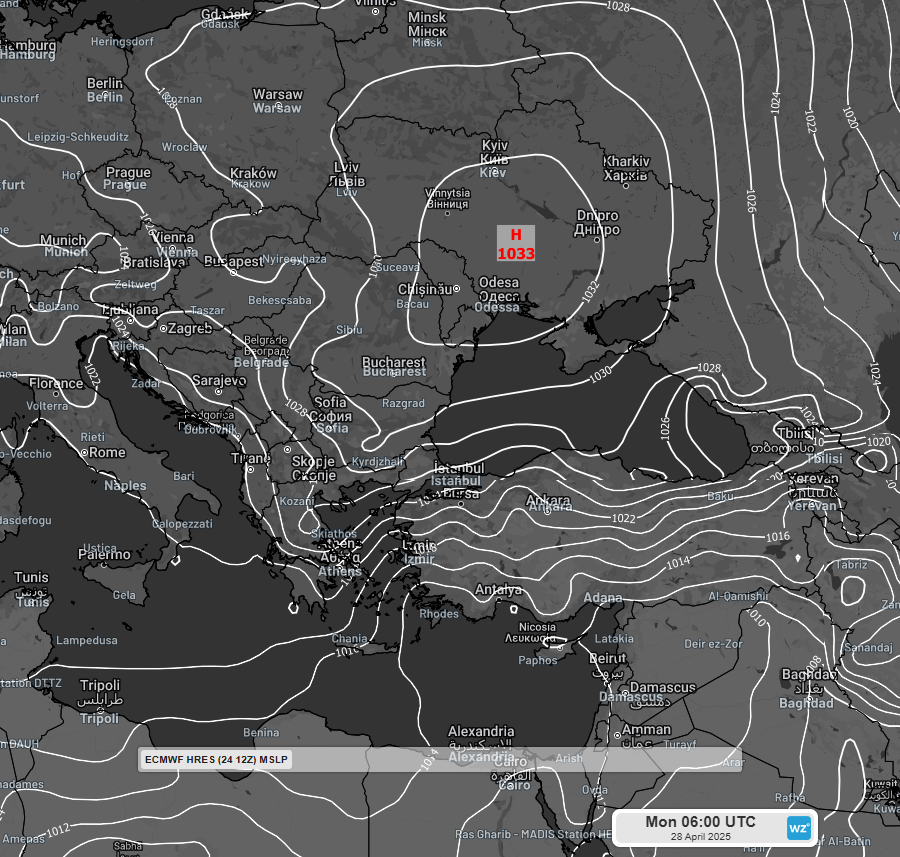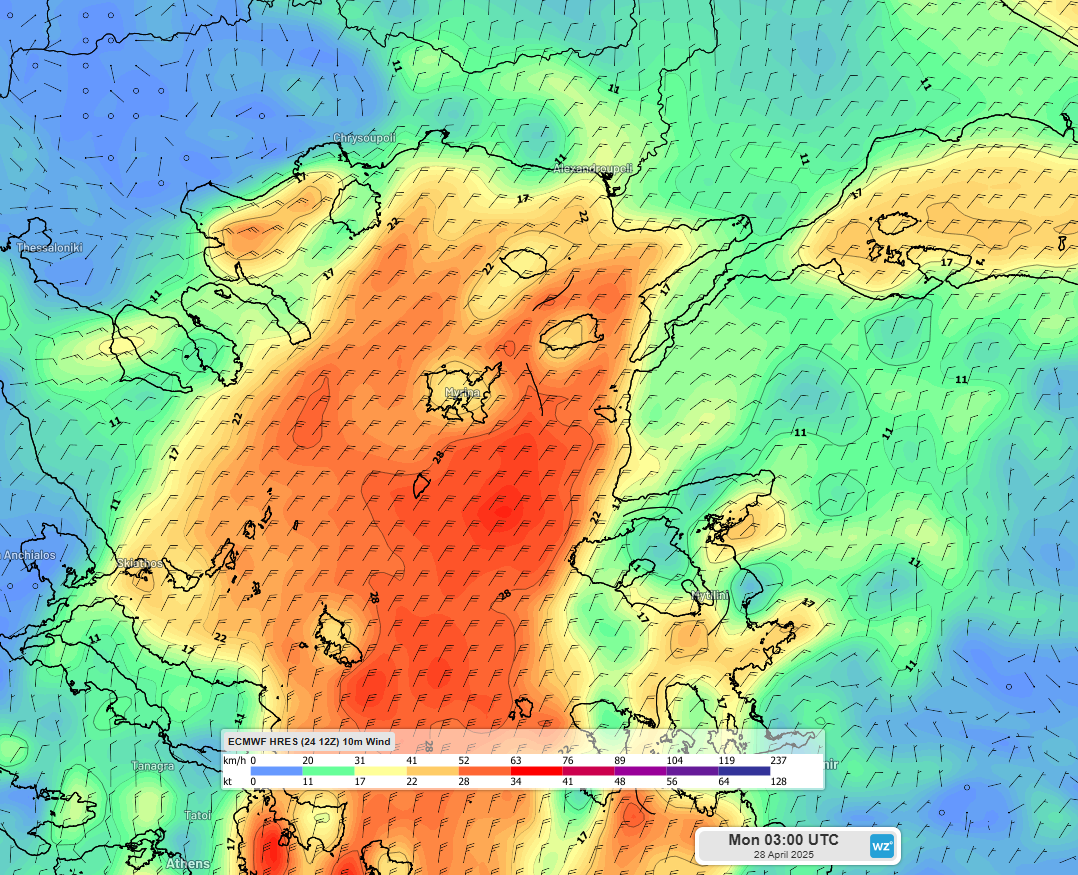How weather impacted the original ANZAC day
April 25, 1915, is the date that the Anzacs began the Gallipoli Campaign. However, the original plan was for the invasion to begin at dawn on April 23. Bad weather caused a two day delay.
The weather models and data that we take for granted today did not exist in either of the world wars and it was very difficult to create weather charts or make accurate forecasts even within a day.
Today we can even use weather models to look back in time and see what the bad weather was that delayed the Gallipoli Campaign. On the 23rd sustained winds were blowing from the north-northeast at about 40km/h over the Aegean Sea between Greece and Turkey. This wind would have been a headwind and would have been producing waves of 1-2m.

Image: near surface winds on April 23, 1915 (m/s). Source: NOAA.
These winds were produced by a pressure gradient between high pressure over eastern Europe and Russia and low pressure over Turkey.

Image: Sea level pressure (SLP) anomaly on April 23, 1915. Green/Yellow shows higher than normal pressure and blue lower than normal. Source: NOAA.
A similar pattern is being forecast for next Monday, 28th April 2025. Note how tightly the isobars are packed across Turkey.

Image: Mean sea level pressure on the morning of Monday, 28th April 2025 according to the ECMWF model.
The sustained winds are forecast to be from the northeast at about 40-50km/h, similar to what would have been present on April 23, 1915.

Image: sustained winds (knots) over the Aegean Sea at about dawn on Monday 28, 2025 according to the ECMWF model.
Back to 1915. By dawn of April 25 the high pressure over Europe and Russia had weakened, reducing the pressure gradient across Turkey. This led to a weakening of the winds to about 20km/h, allowing the Anzacs passage from the island of Lemnos, Greece to the coast of western Turkey.

Image: near surface winds on April 25, 1915 (m/s). Source: NOAA.
In the second world war, the weather would play a similar but much greater role in the timing of the D-Day invasion. You can read about how a British forecaster was able to predict a break in the severe weather that determined D-Day: D-Day - the most important weather forecast in history - Met Office.